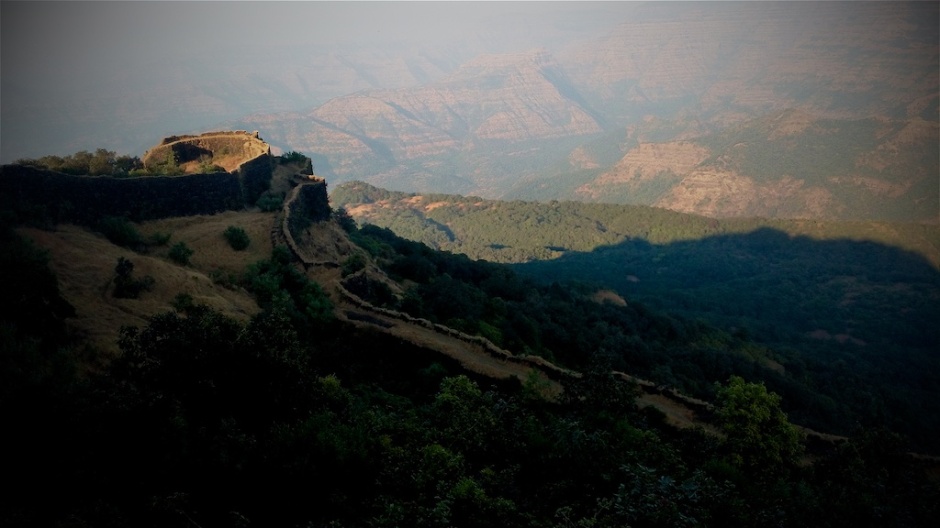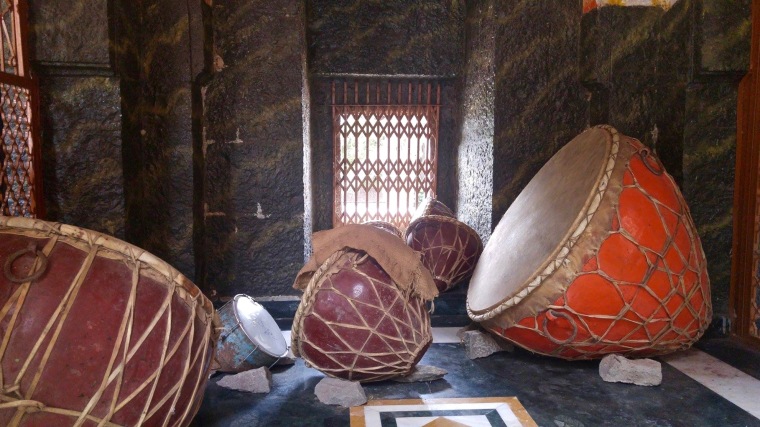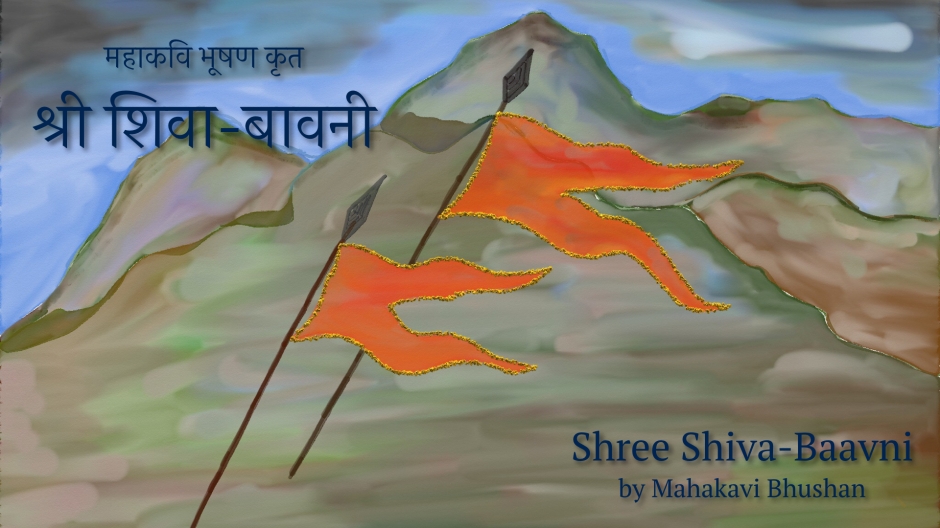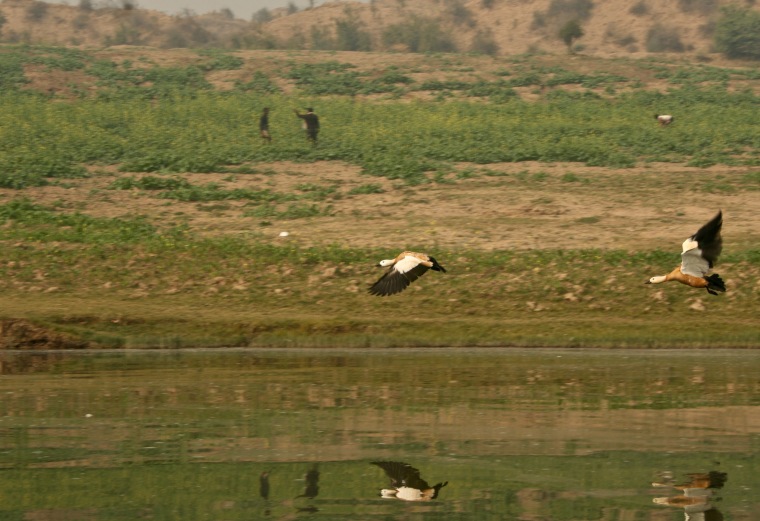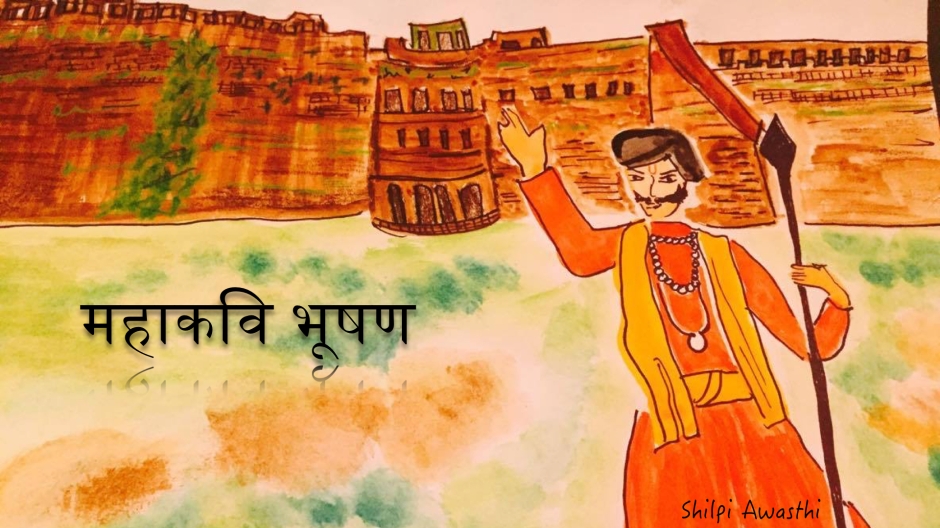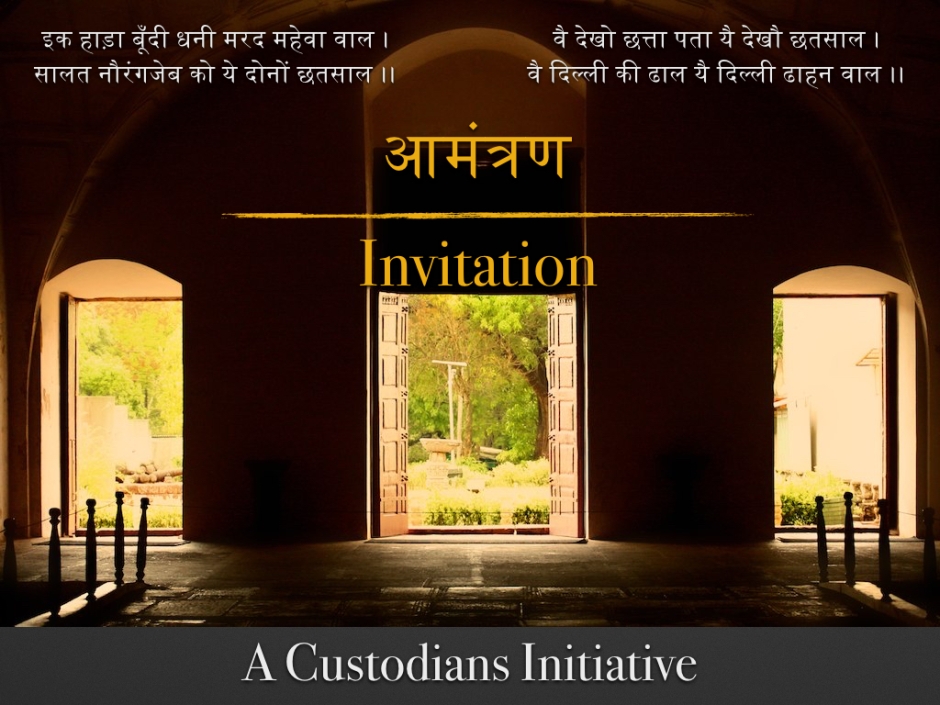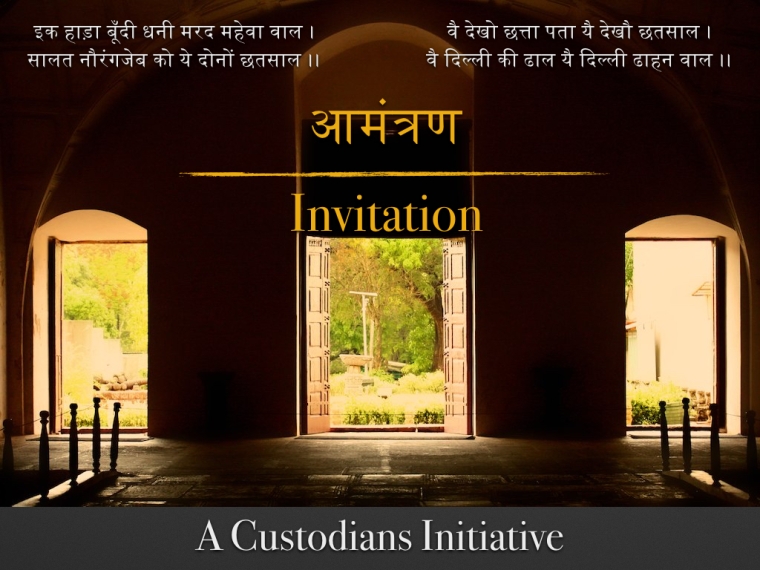The fifth of the 52; (बावनी)। We have an English and a हिन्दी translation. Scroll to the language of your choice.
We are very grateful to Shree Rajendra Chandrakant Rai, our Mentor & Advisor for teaching us the wonderful nuances, and helping us discover the beauty of Mahakavi Bhushan’s poetry.
बाजी गजराज सिवराज सैन साजत ही,
दिल्ली दिलगीर दसा दिरघ दुखन की।
तनीयाँ न तिलक सुथनियाँ पगनियाँ न,
घामै घुमरातीं छोड़ि सेजियाँ सुखन की।।
‘भूषन’ भनत पति बाँह बहियाँन तेऊ,
छहियाँ छबीली ताकि रहियाँ रुखन की।
बालियाँ बिथुरि जिमि आलियाँ निलन पर,
लालियाँ मलिन मुगलानियाँ मुखन की।।
शब्दार्थ:
बाजी = घोड़ा । गजराज = बड़े-बड़े हाथी । दिलगीर = (फ़ारसी) दुखी, रंजिदा । तनीयाँ = चोली । तिलक = (तिरलीक़) एक तरह का ढीला-ढाला कुरता; पगनियाँ = पगों में पहनने की जूतियाँ, पन्हइयाँ । सुथनियाँ = पायजमा । घामैं = घाम में, धूप में । घुमरात = घबरा कर भागती फिरती हैं । रूख = पेड़ । आलियाँ (अलियाँ) = भौंरा । नलिन = कमल । लालियाँ = सुर्खी, सुन्दारता ।
भावार्थ:
शिवाजी महाराज की सेना के द्वारा अपने घोड़ों और हाथियों को युद्ध के लिये सजाते ही दिल्ली के बादशाह की दशा बिगड़ने लगती है। इसको देखकर, उनकी स्त्रियों के सिर पर वस्त्र, पाजामा, और जूतियाँ भी व्यवस्थित नहीं रह पाति। सेज पर सोने का सुख त्याग कर धूप में इधर-उधर भागती फिरती हैं।
भूषण कवि कहते हैं कि, जिन नई-नवेली दुल्हनों को अपने-अपने पतियों की बाहों में विश्राम करने का सुख उठाना चाहिये था, वे महल के बाहर जंगलों में पेड़ों की छाया तलाश करती भटक रही हैं। उन सुंदरियों के केश इस तरह बिखर गये हैं, जैसे कमल पुष्प पर भंवरों के झुंड उड़ रहे हों। मुगल-स्त्रियों के मुखों की लालिमा मलिन पड़ गयी है।
काव्य सुशमा:
- उपमा अलंकार
- अनुप्रास अलंकार
- भय का मनोवैज्ञानिक प्रीभाव कैसा होता है, इसका चित्रण कुशलतापूर्वक किया गया है
- अतिशयोक्ति अलंकार
English Translation
baajee gajaraaj sivaraaj sain saajat hee,
dillee dilageer dasa diragh dukhan kee.
taneeyaan na tilak suthaniyaan paganiyaan na,
ghaamai ghumaraateen chhodi sejiyaan sukhan kee..
‘bhooshan’ bhanat pati baanh bahiyaann teoo,
chhahiyaan chhabeelee taaki rahiyaan rukhan kee.
baaliyaan bithuri jimi aaliyaan nilan par,
laaliyaan malin mugalaaniyaan mukhan kee..
Word-Meanings:
बाजी = horse; गजराज = elephant; दिलगीर = (Persian word) sad, depressed; तनीयाँ = blouse, bodice; तिलक = a loose kurta; पगनियाँ = shoes; सुथनियाँ = churidaar or pajamas; घामैं = in the sun; घुमरात = wandering in fear; रूख = tree; आलियाँ (अलियाँ) = bees; नलिन = lotus; लालियाँ = beauty.
Essence:
As Shivaji’s army, with its horses and elephants gets ready, the state of the kings of Delhi is that of sadness, depression and fear. Their clothes, accessories, and footwear are unkempt and bedraggled. The women of the palace have left the comfort of their rooms and run helter-skelter in the sun.
The newly weds, who should have been in the arms of their beloved are running in the forests, seeking shelter and shade with the trees. Their hair is dishevelled and resembles a swarm of bees over a lotus; their faces have paled and accentuated their pallor.
संदर्भ / References
- पं॰ हरिशंकर शर्मा कविरत्न। शिवा-बावनी, टीका-टिप्पनी, अलंकार तथा प्रस्तावना सहित। आगरा: रामप्रसाद एण्ड ब्रदर्स
- आनन्द मिश्र ‘अभय’।। शिवा-बावनी, छत्रसाल दशक सहित। लकनऊ: लोकहित प्रकाशन। २०१२
- आचार्य विश्वनाथप्रसाद मिश्र। भूषण ग्रंथावली। नयी दिल्ली: वाणी प्रकाशन। २०१२।
